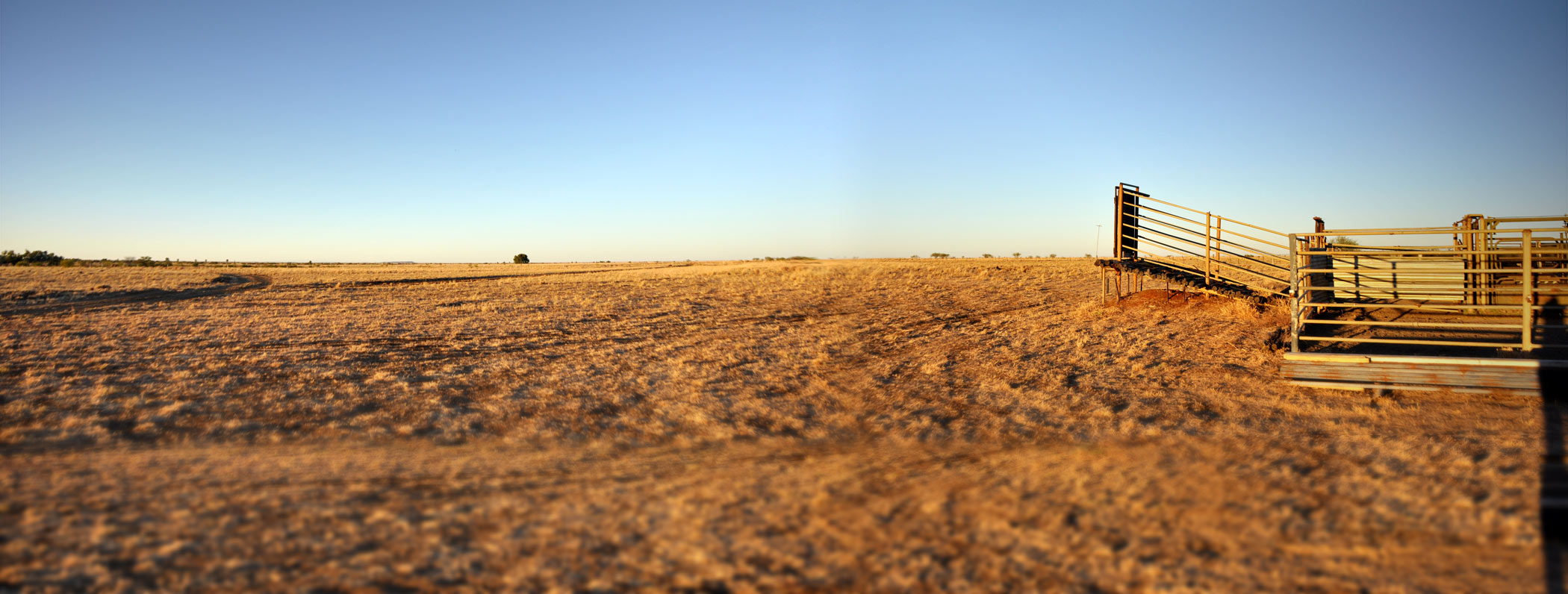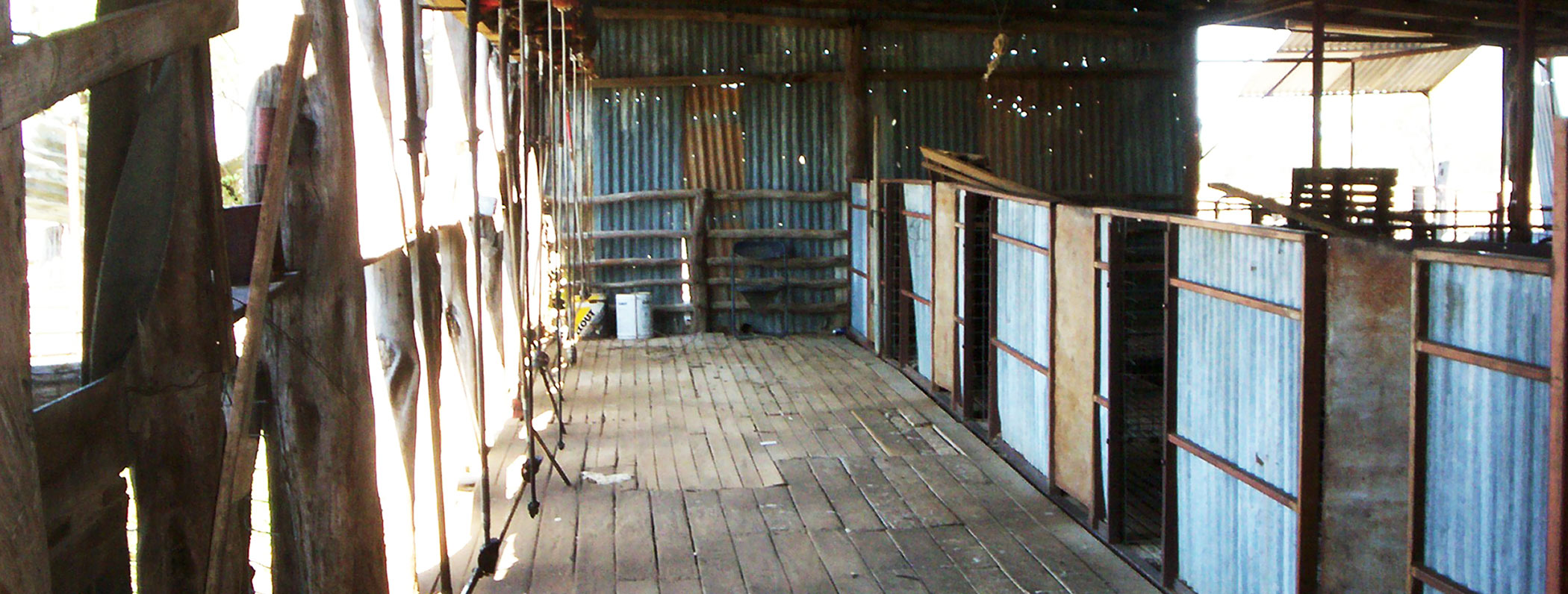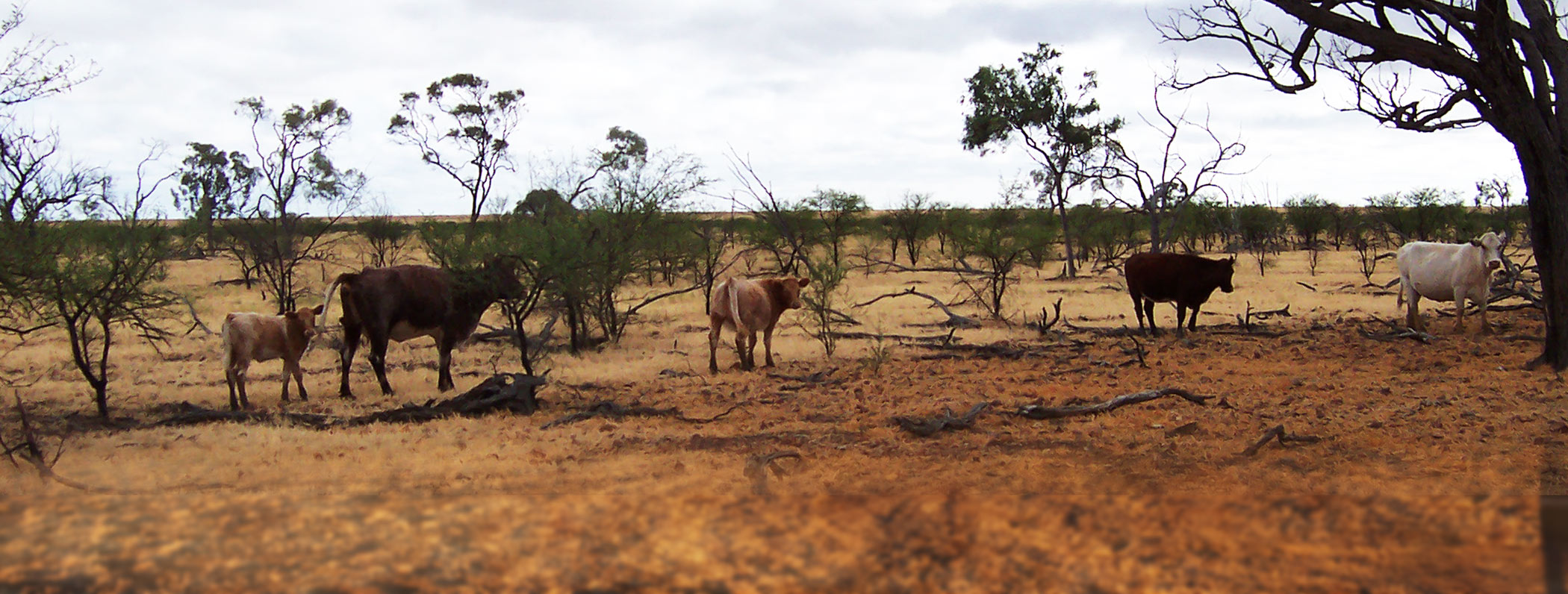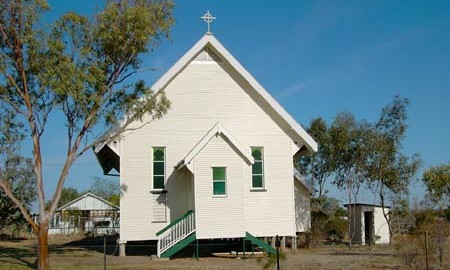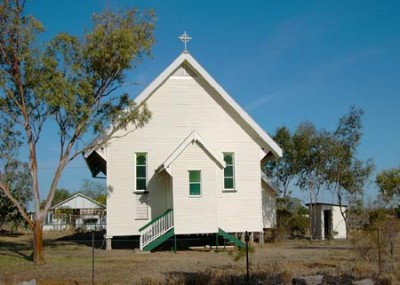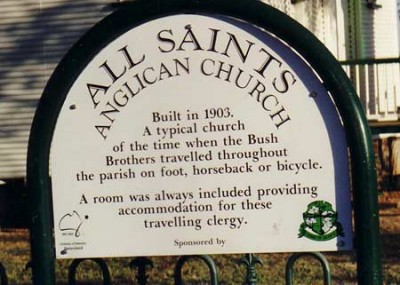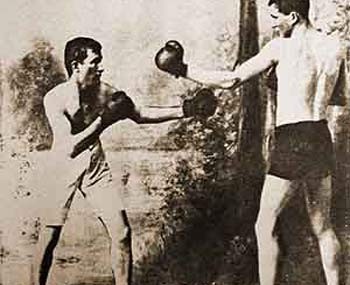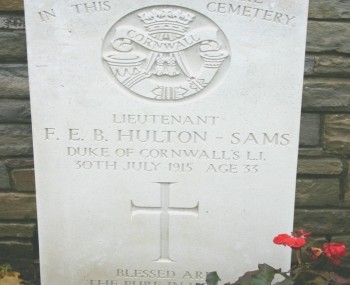While initial services were being held in the Muttaburra Court House and on station homesteads, the desire to build a church in Muttaburra was constantly being expressed. However, extreme isolation, severe drought conditions and decline in business in the area was to prove a constant stumbling block to such plans.
The Reverend John Aldis, who had been appointed to the Western Mission District in 1882, performed the first recorded Anglican Church Service held in Muttaburra in 1883. He also performed the first recorded christening in the area; that of Ellis Johnson Olliver at Mt. Cornish on 11th November 1883.
By 1897, Muttaburra was being serviced by the Brotherhood of St Andrews. These young men from England pledged themselves to a minimum of five years service to the ministry in the “west”; throughout which they travelled as best they could by sulky, bicycle or on horseback.
It had been estimated that “a fair iron building could be erected for £25O”. The community, though affected by hard times, worked hard to gather such resources. Mr Richard Lloyd of “Blue Gate” appealed to his son-in-law’s family in Wales and Mr A. Gilbertson of Pontardawe who owned an iron and tin plate foundry, very generously promised all the iron required to complete the whole building.
In 1902, Mr A. C. Cooper M.L.A. of “Weewondilla”, offered to supply the £100
required to complete the church as a gesture to the memory of his parents, who had recently died in Slipo, Ireland.
Messes Hutton and Hooking, Architects, Rockhampton prepared plans for the building, and the tender by Mr Hack of Longreach for £170 to erect the building was accepted. The church’s design was unique to that period as a second small room off the vestry was included to provide accommodation for travelling “Bush Brothers”.
Of these young men probably the best remembered and revered is Frederick Edward Barwick Hulton-Sams; popularly known as the “fighting parson”. He was reputed to carry a bible in one hand and a pair of boxing gloves in the other. Men from all denominations attended his wool-shed services; after which he would strip to the waist and box with the best the shed had to offer. Wagers on his bouts often resulted in windfalls for the tiny Anglican brotherhood he represented, once winning a horse and buggy for the brothers to use on the long journeys between towns.
Hulton-Sams will always be remembered for his 95-mile dash from Jericho to Aramac, to be at the bedside of Brother Guy Maude Roxby the first of the brothers to give his life in service to the Brotherhood. Hulton-Sams enlisted the help of a railway fettler and together, despite bleeding hands, blinding rain and exhaustion they pumped a railway inspection trolley to within five miles of Aramac where the line ceased. With dogged determination, with his strength draining, Hulton-Sams ran the remaining distance to reach the side of Brother Guy Maude Roxby who succumbed to typhoid one hour later. Brother Hulton-Sams returned to England and enlisted in the British Imperial Forces at the outbreak of World War One. He was killed in action on 31st July 1915. Memorial plaques in Aramac, Muttaburra and Longreach remember both men.
There are significant stories surrounding the many gifts given to the church by members of the community and friends back in Britain – most of which remain in the church today. Sadly the original font made from rock hewn in Wales was removed from the vestry and has been irretrievably lost to us today. After 1937, the Lloyd family had the porch added to the church in memory of their parents Richard and Isabella Lloyd.
Ever since its dedication, All Saints Muttaburra has never ceased to function as a church, thanks to its many dedicated servants. There were none more loyal than the Lloyd family; the last of whom, Miss Marjorie Lloyd, died on 13th September 1961.
– Helen Marsh
